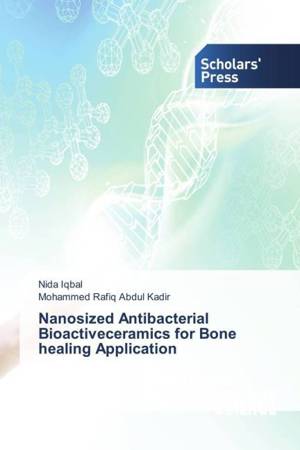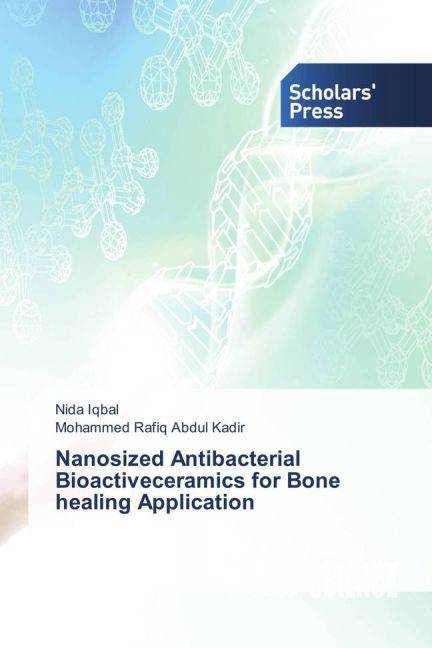
Bedankt voor het vertrouwen het afgelopen jaar! Om jou te bedanken bieden we GRATIS verzending (in België) aan op alles gedurende de hele maand januari.
- Afhalen na 1 uur in een winkel met voorraad
- In januari gratis thuislevering in België
- Ruim aanbod met 7 miljoen producten
Bedankt voor het vertrouwen het afgelopen jaar! Om jou te bedanken bieden we GRATIS verzending (in België) aan op alles gedurende de hele maand januari.
- Afhalen na 1 uur in een winkel met voorraad
- In januari gratis thuislevering in België
- Ruim aanbod met 7 miljoen producten
Zoeken
Nanosized Antibacterial Bioactiveceramics for Bone healing Application
Nida Iqbal, Mohammed Rafiq Abdul Kadir
Paperback | Engels
€ 63,45
+ 126 punten
Omschrijving
Bioceramics are one of the most important class of biomaterials which have been recognized as bone replacement materials due to their excellent bioactivity, biocompatibility and osteoconductivity properties. However; it exhibits poor antibacterial activities, long-term in vivo performance of bioceramics can be affected by the presence of various bacterial infections resulting in debilitating pain and often results in removal of implants. In view of the aforementioned conditions, antibacterial bioactive ceramics have developed. The introduction of metal ions into bioceramics has two advantages. Firstly, incorporating metal ions such as (Ag,Zn,F etc.) can improve the properties such as solubility, crystallinity and morphology properties. Secondly can provide excellent antibacterial and bioactivity properties. Therefore, simultaneous additions of ions have the potential to decrease the healing time due to faster osseointegration and low chance of bacterial infection. Thus resulting bioceramics is expected to have superior properties than hydroxyapatite (HA), and hence will be more promising as a biomaterial for implantation and use in human than pure HA.
Specificaties
Betrokkenen
- Auteur(s):
- Uitgeverij:
Inhoud
- Aantal bladzijden:
- 104
- Taal:
- Engels
Eigenschappen
- Productcode (EAN):
- 9783639859492
- Verschijningsdatum:
- 30/10/2015
- Uitvoering:
- Paperback
- Afmetingen:
- 150 mm x 220 mm
- Gewicht:
- 174 g

Alleen bij Standaard Boekhandel
+ 126 punten op je klantenkaart van Standaard Boekhandel
Beoordelingen
We publiceren alleen reviews die voldoen aan de voorwaarden voor reviews. Bekijk onze voorwaarden voor reviews.









